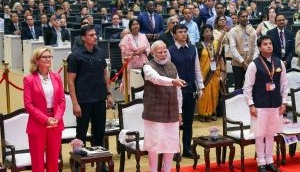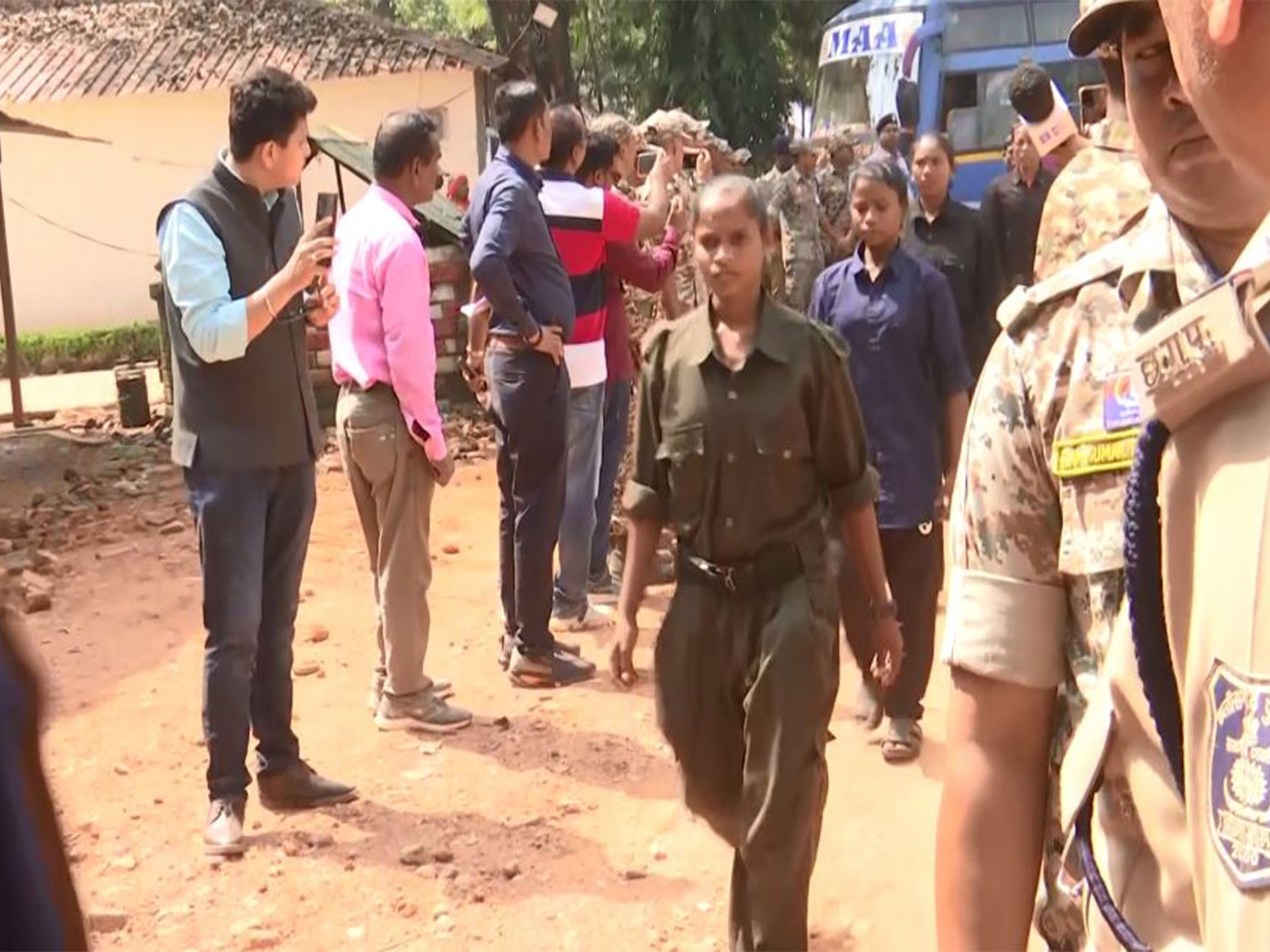Rajasthan govt approves new job quotas: will caste cauldron boil again?

The decision
- The Vasundhara Raje Cabinet has approved 2 Bills to reserve government jobs
- They grant a 5% quota to Gujjars and 14% to economically weak forward castes
- This takes the total reservation in the state to 69%
The trouble
- The Supreme Court has decreed against more than 50% reservation
- Reservation for Gujjars can upset the powerful Jat community
- Jats want to protect their OBC quota; this may lead to agitations against the govt
While the Gujarat government remains in a fix over the Patel community's agitation for reservation, the Rajasthan government has played a new quota card.
On 8 September, the state government approved a draft legislation providing reservation in government jobs to Gujjars and economically weaker sections among forward castes.
Vasundhara Raje's Cabinet gave a green signal to the Rajasthan Special Backward Classes (Reservation of Seats in Educational Institutes in the State and of Appointments and Posts in Services under the State) Bill, 2015.
The bill, if passed in the forthcoming assembly session, will provide 5% special reservation to the Gujjar community.
The Cabinet also gave its nod to the Rajasthan Economically Backward Classes (Reservation of Seats in Educational Institutes in the State and of Appointments and Posts in Services under the State) Bill, 2015. The bill will pave the way for 14% reservation for the economically weaker section of forward castes.
Creamy layer doubt
The Raje government had promised Gujjars that it would introduce a legislation to give them quota benefits after a massive agitation by the community in May this year.
However, the draft legislation does not mention the provision for a 'creamy layer'. According to senior minister Rajendra Rathore, this would be decided after discussions in the assembly.
The 'creamy layer' concept is currently meant only for OBCs. Families with an annual income of more than Rs 6 lakh for a period of three consecutive years are considered to be part of the creamy layer.
The Rajasthan Cabinet has approved two bills, providing 5% quota to Gujjars and 14% to poorer forward castes
There is no consensus among the Gujjar community over including a 'creamy layer' provision in the bill. While Gujjar leaders Kirori Lal Bainsla and Shailendra Singh have consented on keeping the 'creamy layer' out of the purview of reservation, Har Prasad and Himmat Singh Gujjar have opposed the idea.
"We will not be satisfied if the final Act contains any provision of a 'creamy layer'. That is the crucial point of contention, on which consensus has not been arrived at," a national daily quoted Himmat Singh Gujjar as saying.
The beneficiaries
The special backward class category formed by the Raje government just before the 2008 assembly elections also includes Banjara/Baldiaya/Labana, Garia-Lohar/Gadoliya, Rebari/Devasi/Raika and Gadaria/Gadri/Gayari communities.
But Gujjars remain the most influential group within this category. With a population of more than 2.1 million, they constitute about 7% of the total population of Rajasthan.
Upper castes in Rajasthan comprise about 25-30% of the total population. Although, there is no definitive data of poverty among them, some estimates suggest around 20% of them come under the economically weak category.
A 2009 notification by the state government says that families not earning more than Rs 2.50 lakh per annum would come under 'economically weaker sections'.
Legal tangles
The proposal, if enacted as law, will still have to go through judicial scrutiny.
It would take the total reservation quota in the state to 69%, defying the Supreme Court verdict that overall reservation should not exceed 50%.
However, the government may find a way out by including the law in the Ninth Schedule of the Constitution, which provides immunity against judicial review.
The Tamil Nadu government implemented 69% reservation in 1993. In 1994, the 76th amendment included the Tamil Nadu Reservation Act of 1993 in the Ninth Schedule.
However, a nine-judge bench of the Supreme Court delivered a judgement in 2007, saying there could not be any blanket immunity from judicial review of laws under the Ninth Schedule.
"If laws put in the Ninth Schedule abridge or abrogate fundamental rights, resulting in violation of the basic structure of the Constitution, such laws need to be invalidated," then-Chief Justice of India, Yogesh Kumar Sabharwal noted.
The Rajasthan government is proceeding with the bill despite the fact that the expert committee formed to assess the Gujjars' demand has not given its report.
The apex court is also yet to give a nod to the demands of the Gujjars.
In fact, the Rajasthan High Court has twice stayed similar reservation provisions, in 2009 and 2013, observing that "more than 50% reservation without any valid justification is unconstitutional".
Caste agitation on the cards
It was the BJP which initiated proceedings that have led to this conundrum. In the run up to the 2003 assembly elections, it promised reservation to Gujjars.
It had to agree to a demand for 5% reservation prior to the 2008 assembly elections, after violent protests by the community.
Ashok Gehlot's subsequent Congress government persisted with the decision until it was quashed by the court.
But, playing the quota card is not without risks. The powerful Jat community, which constitutes over 20% of Rajasthan's population, has openly opposed the Gujjar demand for reservation.
The Jat community fears this may reduce the OBC quota, which accommodates 91 castes in Rajasthan. Community leaders have declared they will not tolerate a reduction in OBC quota and can go to any extent to save it.
Last month, when the Rajasthan High Court quashed Jat reservation in the Bharatpur and Dholpur districts, Jats threatened the government with dire consequences if their OBC quota was touched.
This is not withstanding the fact that Jats are among the top five castes that have benefitted from the caste quota. They also dominate the political scenario with 32 MLAs. It is clear that any change in Jat reservation will have political consequences for the state government.
Then, there is the Meena community, which is determined to resist any tampering with the ST quota.
The memory of violent agitations by the Gujjars in 2008 has still not faded away and any miscalculation on the part of the state government could be a recipe for trouble.
First published: 10 September 2015, 6:01 IST




![BJP's Kapil Mishra recreates Shankar Mahadevan’s ‘Breathless’ song to highlight Delhi pollution [WATCH] BJP's Kapil Mishra recreates Shankar Mahadevan’s ‘Breathless’ song to highlight Delhi pollution [WATCH]](https://images.catchnews.com/upload/2022/11/03/kapil-mishra_240884_300x172.png)

![Anupam Kher shares pictures of his toned body on 67th birthday [MUST SEE] Anupam Kher shares pictures of his toned body on 67th birthday [MUST SEE]](https://images.catchnews.com/upload/2022/03/07/Anupam_kher_231145_300x172.jpg)






